This villa is a recreation of a vacation home built in Karuizawa in 1997. The floor slab is curved up to the roof against the hillside at the rear, naturally absorbing the pressure of the soil behind it and channeling it to the floor slab. In addition, the rear edge of the horizontal roof plane is fully anchored to the top of the floor slab, thus channeling all horizontal forces to the floor slab. The three minimal columns on the front (seaside) facade are thin and bear no horizontal forces at all, but only vertical forces. All walls are eliminated, with the space enclosed entirely by movable sliding doors. The kitchen and bath are located in the open on the same "universal floor," and the space can be flexibly partitioned by sliding doors.

Architecture
SIMOSE is an art complex occupying a 4.6-hectare site facing the Seto Inland Sea in Hiroshima Prefecture, composed of the Simose Art Museum; Simose Art Garden Villa, an art hotel featuring 10 all-suite villas; and a French restaurant.
The museum entrance hall, exhibition hall, and administration building are arranged parallel to the sea and connected by a corridor that forms a 190-meter-long, 8.5-meter-high mirrored glass screen.
Beyond the mirrored glass screen, eight movable galleries are arrayed on a water basin and sheathed in colored glass. This space forms a symbolic landscape that evokes the beauty of Setouchi islands.
Emile Gallé's Garden is located outside the northern end of the mirrored glass screen. The garden features seasonal flowers and plants used as motifs by the French artist and designer Emile Gallé (1846-1904), whose works form a major part of the museum collection.
The mirrored glass screen reflects these landscapes, amplifying the scenery of the Seto Inland Sea while erasing the presence of the large buildings.
On the north side of the site are five waterfront villas facing the water basin. Five forest villas surrounded by trees occupy the south side, with the French restaurant and herb garden located in between.
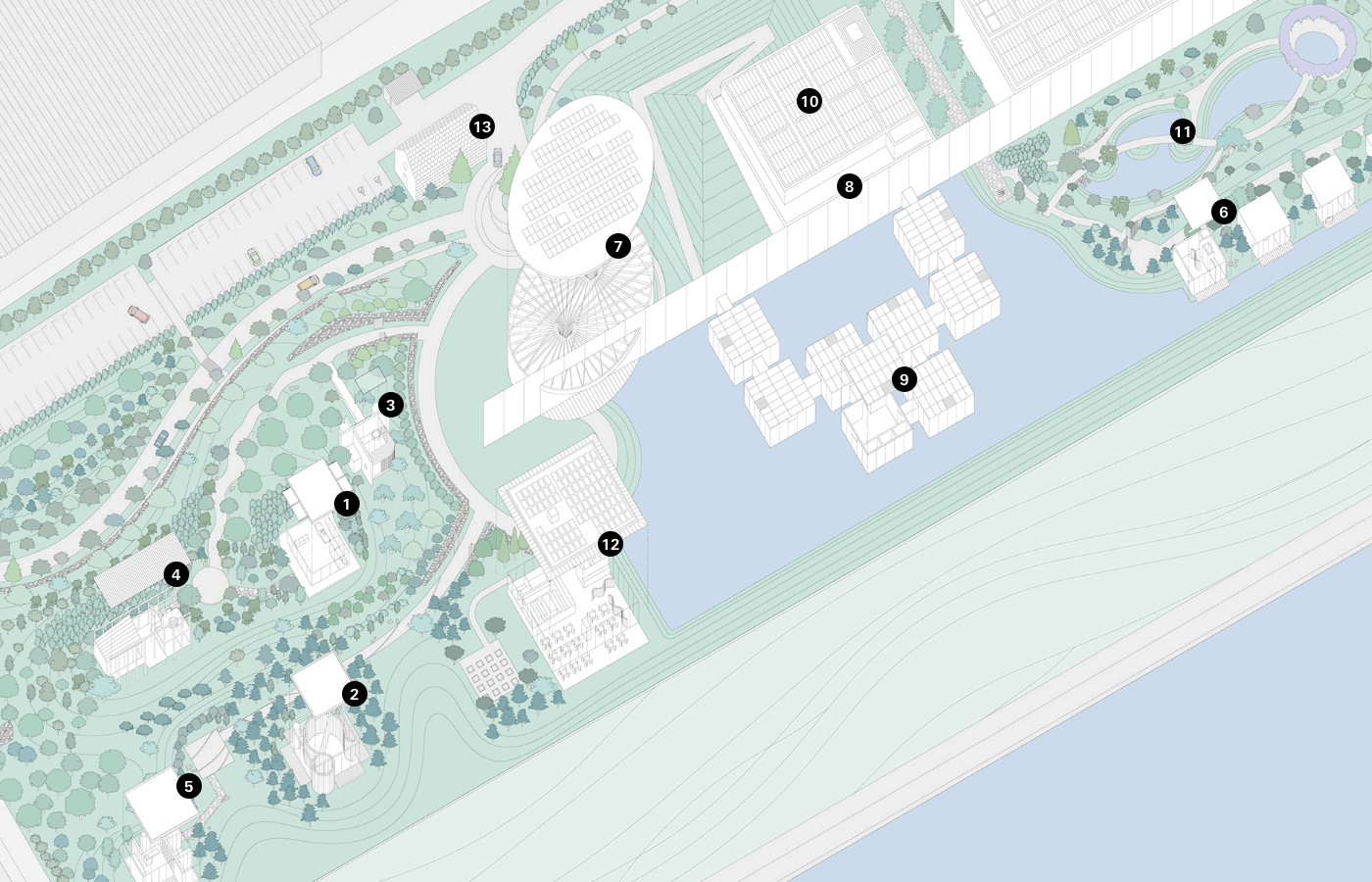
Villas
-
1Wall-Less House
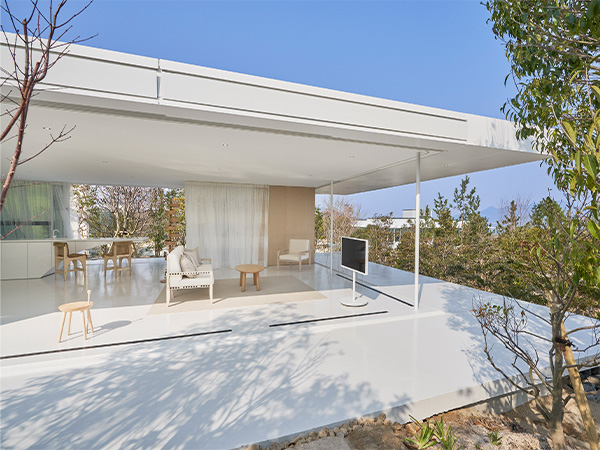
-
2Paper House
Paper House is a recreation of a villa built in 1995 on Lake Yamanaka. On a 10 x 10 metre flat floor, 110 "paper tubes," 2.7 meter long, 28 cm in diameter, and 15 mm thick recycled paper tubes, are arranged in an S-shape, and the rooms are placed inside and outside the squares and arcs created by the tubes. This plan was the first time that paper tubes received structural certification to be used as permanent building structure. Vertical loads are supported by 10 paper tubes, and lateral forces are borne by 80 paper tubes. The large arc surrounded by 80 paper tubes creates a living space inside and a corridor space outside. A paper tube 123 cm in diameter that stands separately in the corridor section contains a restroom. A small arc encloses a bathroom and a small garden, while the exterior paper tube serves as a blindfold screen. The large circular living space is a universal space dotted only with a kitchen island, sliding doors and movable closets. The opening of the perimeter sash highlights the horizontal roof supported by a colonnade of paper tubes, creating a continuity of corridor and exterior terrace.

-
3Cross Wall House
Cross Wall House is a villa newly designed for Simose Art Garden Villa, In order to construct a building on a sloping site, this villa consists of two reinforced concrete walls arranged in a cross pattern, with two slabs of cross-laminated timber (CLT) floating above the ground. Because the building is separated from the ground, no retaining walls are necessary. A ramp is used to approach the entrance, which is raised above the ground as if on pilotis. In between the crossing walls is the bedroom, with the closet, shower room, toilet, staircase, and equipment attached to the outside as separate volumes. The living room-style bath area on the top floor has a hinoki bath and daybed overlooking the Seto Inland Sea.
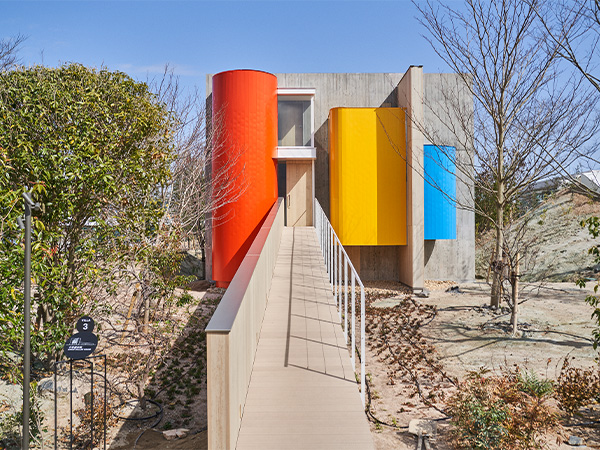
-
4House of Double-Roof
This villa is a remake of a private retreat built in 1993 on a slope alongside Lake Yamanaka. Ban devised a distinctive double-roof structure in which the roof and ceiling are separated to withstand snow accumulation without increasing the size of the structure. The entire building is covered by a roof that is the minimum size necessary to withstand the snow, with a separate ceiling structure below. This means that the ceiling is not suspended from the roof, and thus remains unaffected even if the roof sags more than is typical.
The living area is separated by an outdoor terrace beneath the roof from the bedroom and bathroom, which step down by half a floor together with the topography. Above the bedroom and bathroom is a terrace with a Jacuzzi tub overlooking the Seto Inland Sea.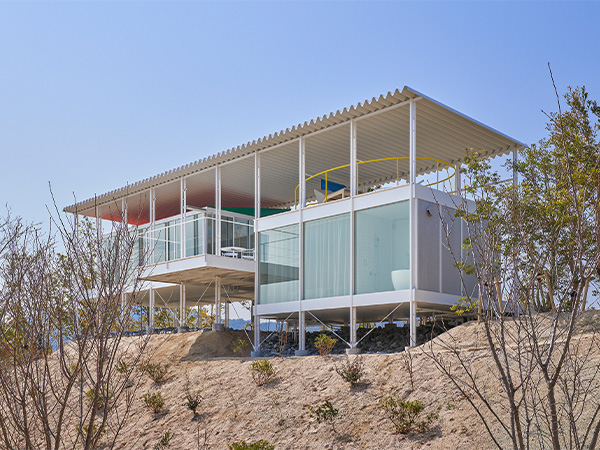
-
5Furniture House
Furniture House is a remake of a vacation home built in 1995 alongside Lake Yamanaka. The Furniture House was born from the idea that a space could be created by focusing on the strength of bookshelves and putting a roof on top. The space is made possible by giving structural and spatial roles to factory-made furniture. Compared to on-site carpentry work, the interior and exterior can be painted by furniture craftsmen in a factory, which not only ensures higher quality, but makes it possible to manufacture the frame and furniture together with less materials and labor, shortening the on-site construction period and reducing construction costs. While the structure of the original Furniture House made use of the back of the furniture, the structure in this recreation also utilizes the side panels of the furniture, enabling a greater degree of design freedom in their arrangement.

-
6Kielsteg House A-E
Kielsteg is a style of wooden stressed-skin panel invented in Austria that differs from typical stressed-skin panels in the ability to use small cross-sections to form large-span structures. The panels have a distinctive cross-section in which the pitch of the upper and lower flanges are shifted by half and form a curved web. These villas employ Kielsteg not only as normal floor slabs, but also for walls. Furthermore, by cutting and stacking short Kielsteg sections, the distinctive cross-section, which is normally hidden, is used to create louvers. The waterfront villas are built using this Kielsteg structure, to which sliding doors and furniture are added to create unique interiors.
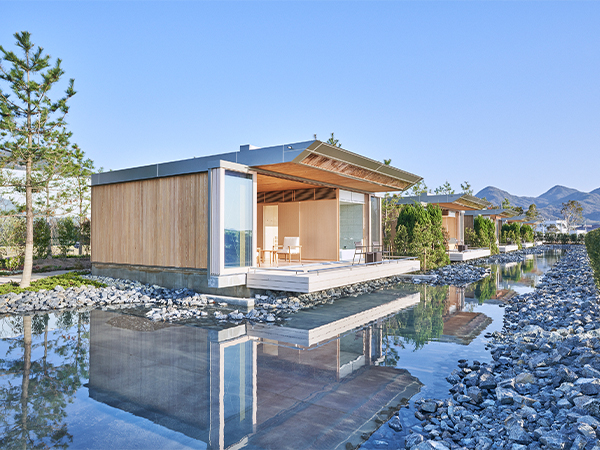
Museum
-
7Entrance Hall
The entrance hall is an elliptical building enclosed by an umbrella-like roof constructed with beams of laminated cypress wood that extend radially from two pillars. Inside are the museum reception area, café, museum shop, and a multipurpose space. The café faces the water basin and has outdoor seating.
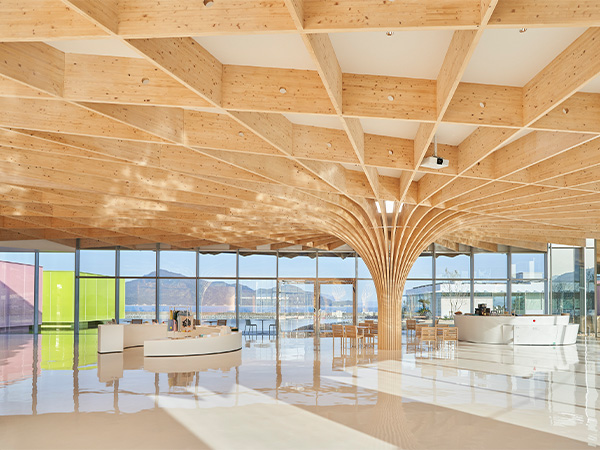
-
8Exhibition Hall
The exhibition hall's large interior space was achieved using post-tensioned reinforced concrete beams. The inland side of the building is made less conspicuous by wrapping it with a pyramid-shaped mound of earth.
Visitors may climb to the top of this pyramid-shaped hill to view the movable galleries and the Seto Inland Sea from the observation deck. At night, the view is lit up by the illumination of the movable galleries and the lights of the Otake industrial complex to the south.
-
9Movable Galleries
The eight movable galleries are 10 x 10 meters, each covered with a different shade of colored glass. Utilizing Hiroshima's shipbuilding technology, each gallery was constructed on top of a barge. When the level of the water basin is raised, the galleries float and can be rearranged without the use of large machinery. Seven different arrangements are possible depending on the content of the exhibition, with the galleries connected by bridges or placed side by side with each other.
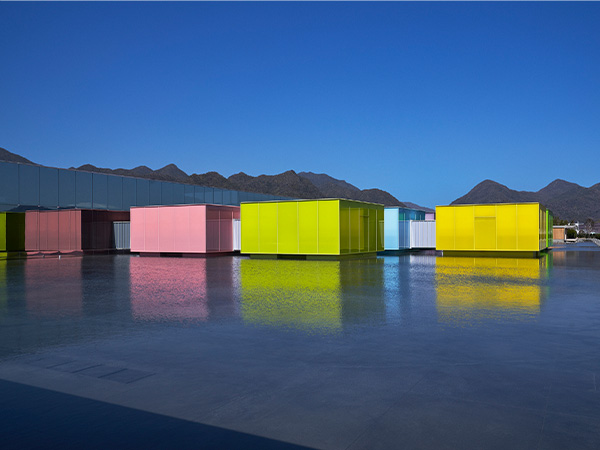
-
10Seaview Terrace
Go outside the exhibition building and climb a gentle slope to see a view of the sea. The beauty of the many islands of the Seto Inland Sea, such as Miyajima, Atatajima, and Etajima, stretch out before your eyes. Here you can enjoy scenery that harmonizes the architecture of SIMOSE, including movable exhibition rooms in eight colors lining a basin of water, and nature.

-
11Emile Gallé’s Garden
Emile Gallé, a craftsman who represented Art Nouveau, not only produced works with motifs of nature, but also worked as a botanist. This garden was planted in harmony with the climate of Setouchi, centering on flowers which appear in Gallé’s works of art.

Restaurant
-
12French Restaurant
The roof of the restaurant is designed to float in the landscape, built with two hybrid beams of steel and laminated cypress wood that intersect at the center of the building. The roof is further divided into sections by laminated cypress beams, which are supported by risers around the perimeter, while horizontal forces are channeled to the fireplace and restrooms in the center of the dining area, making the structure seem invisible. Furthermore, although kitchens are typically blocked from sight by refrigerators and exhaust hoods, everything besides exhaust hoods is kept below the counter height, creating an atmosphere in which guests can focus solely on the surrounding landscape.
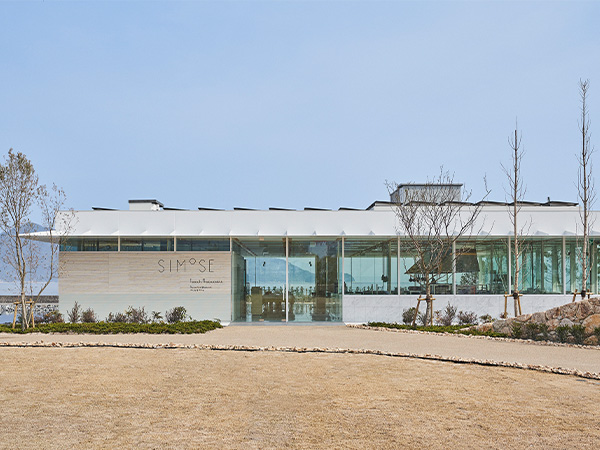
Others
L-angles can be combined and bolted together to create large-span structures such as trusses, and were widely used before steel frame cross-sections became common. The reception building is based on the same idea, with L-angles used to create a variety of spaces. Compressed cedar lumber was fabricated into L-angles and bolted together to create truss-like columns and beams that achieve the structurally required strength and form a simple gabled structure. In the longitudinal direction, the columns are connected with shelves and doors that provide storage.

- Shigeru Ban
- Born in Tokyo in 1957, Shigeru Ban graduated from the Cooper Union School of Architecture in New York in 1984. After working at Arata Isozaki & Associates from 1982-83, he established Shigeru Ban Architects in 1985. Ban also founded the disaster relief organization Voluntary Architects’ Network (VAN). Major works include the Centre Pompidou-Metz (2010), the Mt. Fuji World Heritage Centre, Shizuoka (2017), and the Swatch Omega Headquarters (2019). He has received recognition including Commandeur de L’Ordre des Arts et des Lettres de France (2014), the Pritzker Architecture Prize (2014), the Order of the Purple Ribbon (2017), and the Mother Teresa Memorial Award (2017).



